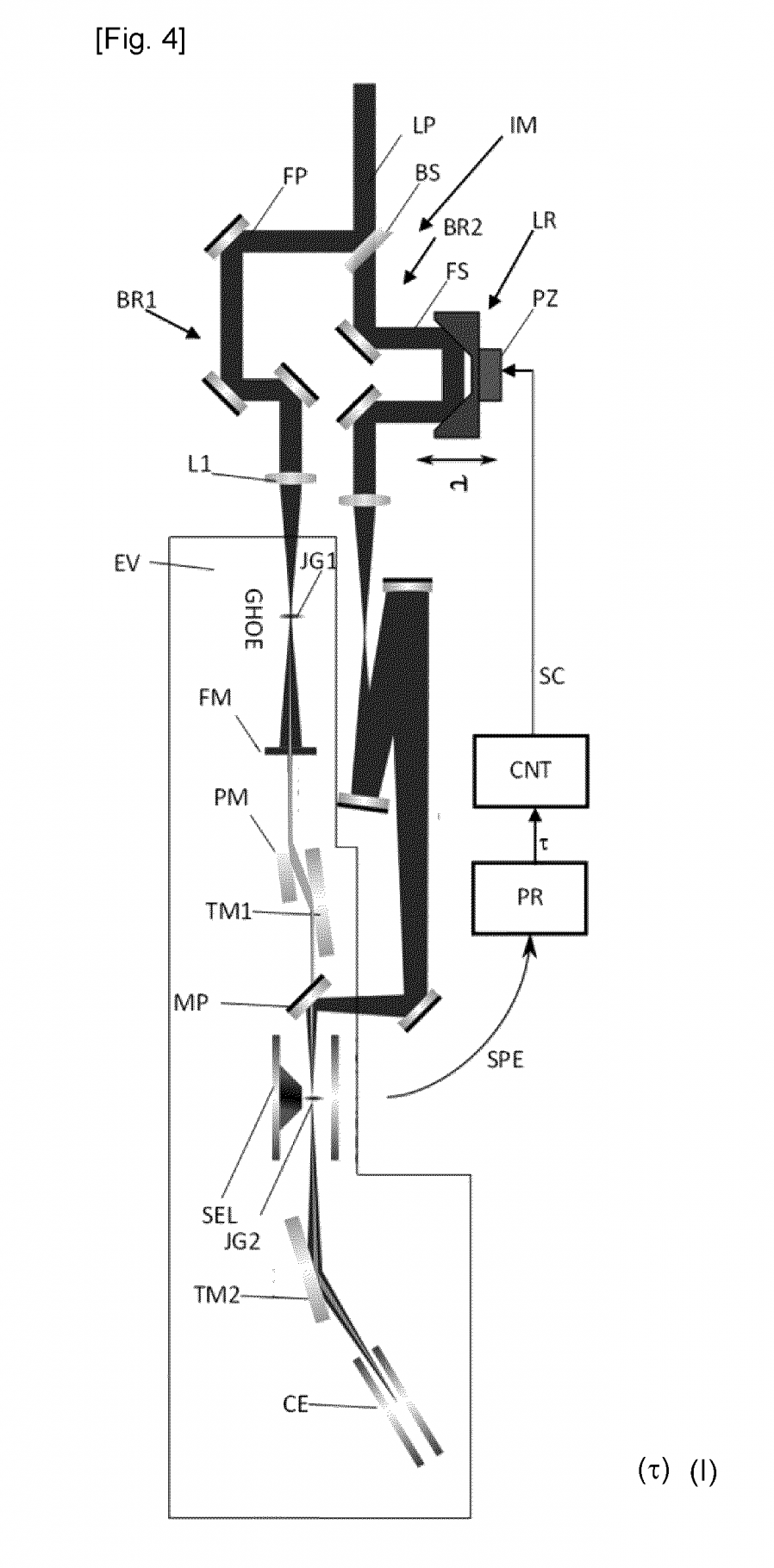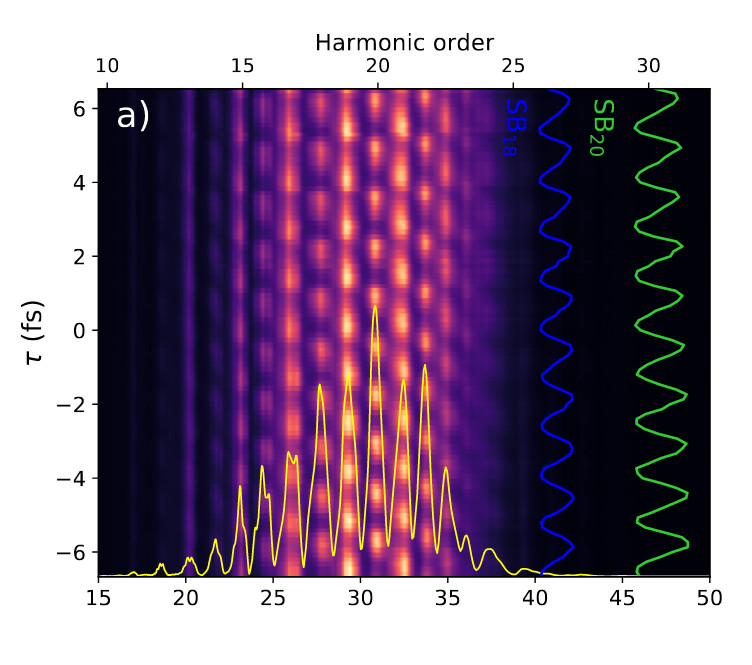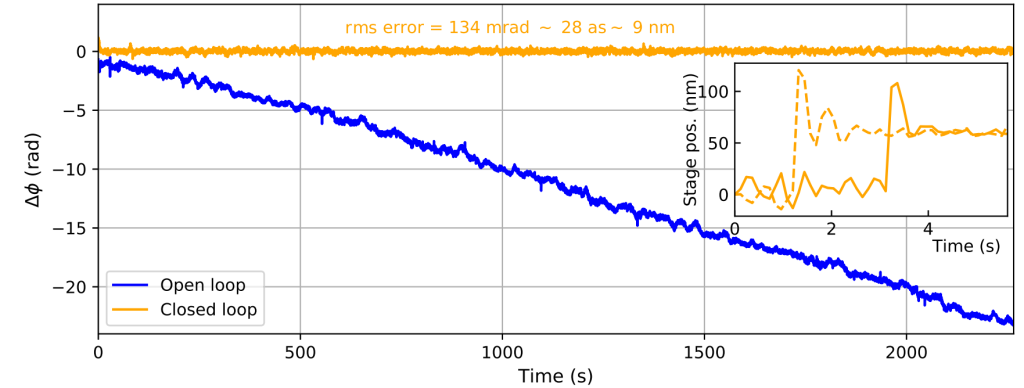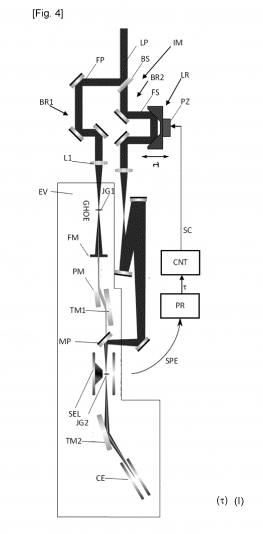
Method and apparatus for controlling the delay between two light pulses on the attosecond scale (WIPO link)
The invention relates to a method for controlling a delay (I) between a first light pulse, called the pump pulse, and a second light pulse, called the probe pulse, the pump pulse, but not the probe pulse, having an intensity and/or a wavelength suitable for ionising a target (JG2), the pump pulse and the probe pulse being generated from a single light beam by means of an interferometer (IM), the method comprising the following steps: a) directing the pump pulse and the probe pulse onto the target, while ensuring an at least partial temporal and spatial overlap of these pulses; b) acquiring a spectrum (SPE) of photoelectrons issued from the target illuminated by the two pulses; c) estimating the delay on the basis of the shape of the acquired spectrum; steps a), b) and c) being repeated for a succession of pump and probe pulses, so as to generate a time series of delay estimations, and d) performing an active stabilisation of the interferometer on the basis of said time series of delay estimations. The invention also relates to application of this method to stabilisation of an interferometer (IM), and to an apparatus for implementing the method.
On attosecond beamlines, temporal resolution is typically achieved using pump-probe experimental schemes, in which a first light pulse triggers a phenomenon, and a second light pulse probes the excited system at a well-controlled delay. During a measurement, the precision of the delay between the two pulses and their durations determines the achieved temporal resolution. To reach the best performance, experiments now require stabilization of the delay on the attosecond scale over several hours, which necessitates overcoming current technical limitations.
A new, effective method for stabilizing this delay has just been achieved on the FAB10 laser at the ATTOLab-Orme platform [5]. By mixing an attosecond XUV harmonic pulse with the IR probe pulse, rare gas atoms are photoionized through several possible pathways that interfere with each other. Measuring the interference pattern across several harmonics provides a precise measurement of the delay between the two pulses and delivers an excellent feedback signal for stabilization.
Over the course of an hour, the stabilized delay exhibits reduced fluctuations with an amplitude of only 28 as RMS, and three-hour-long experiments with this precision have been successfully conducted. This new technique holds the promise of enabling original dynamic measurements on the attosecond beamlines of the ATTOLab platform at LIDYL.
Contact: Thierry Ruchon (LIDYL/ATTO).


Publication
In situ sub-50-attosecond active stabilization of the delay between infrared and extreme-ultraviolet light pulses,
M. Luttmann, D. Bresteau, J.-F. Hergott, O. Tcherbakoff et T. Ruchon,
Physical Review Applied, 15(3) (2021).


